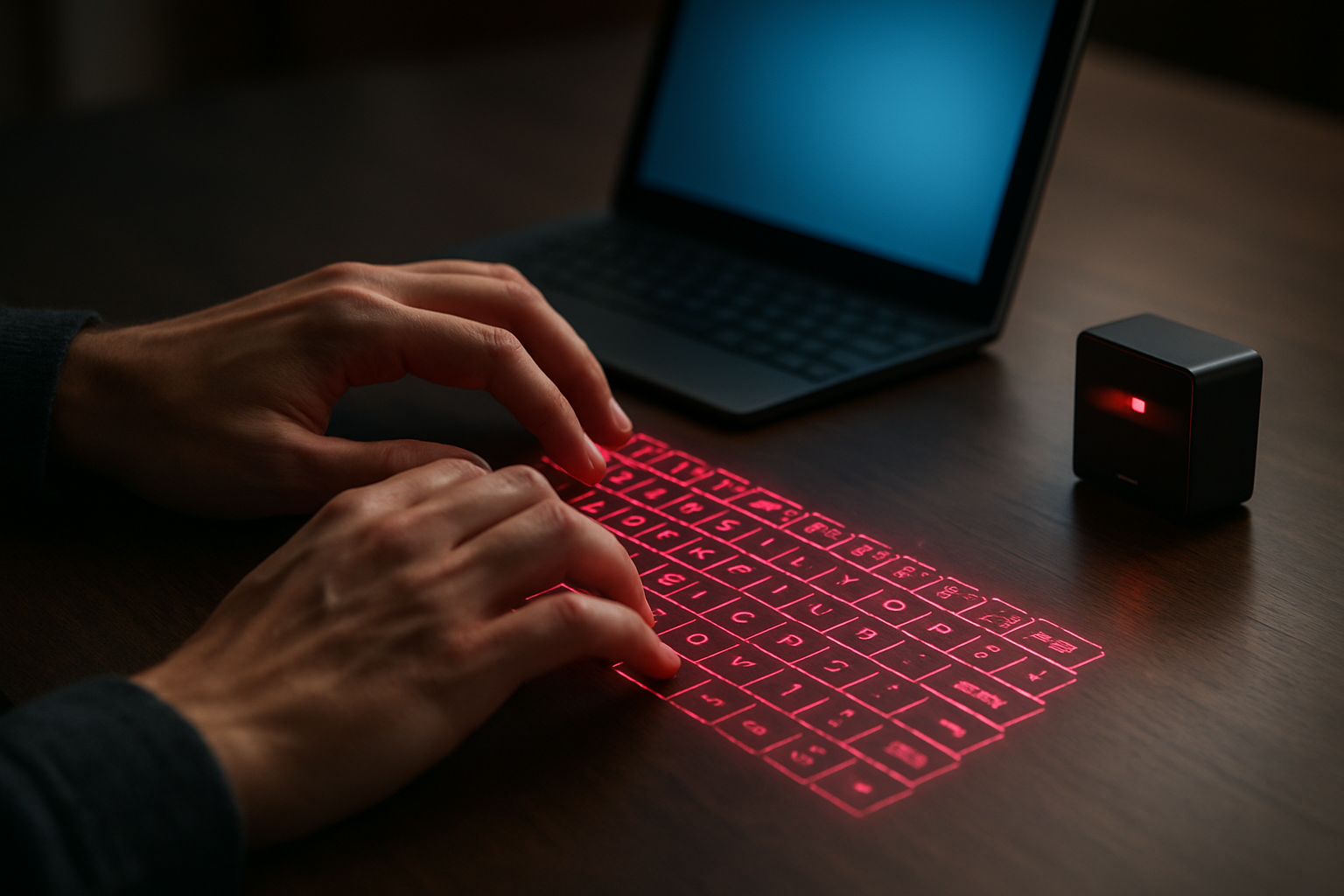Holographic Keyboards: The Next Frontier in Typing
Imagine tapping away on thin air, your fingers dancing across an invisible interface as letters materialize on your screen. This isn't science fiction—it's the cutting-edge world of holographic keyboards. As we push the boundaries of human-computer interaction, these futuristic input devices are poised to revolutionize how we type, work, and interact with our digital devices. But what exactly are holographic keyboards, and how close are we to seeing them in our everyday lives?

The Evolution of Typing Technology
The journey from mechanical typewriters to holographic keyboards spans over a century of innovation. Early typewriters, with their clunky keys and ink ribbons, gave way to electric models in the mid-20th century. The digital revolution brought us membrane keyboards, chiclet keys, and touchscreen interfaces. Each iteration aimed to make typing faster, more efficient, and more comfortable.
Holographic keyboards represent the latest step in this evolution, offering a blend of tactile feedback and virtual flexibility. By projecting a keyboard onto any flat surface, they eliminate the need for physical hardware, potentially revolutionizing how we interact with our devices in various settings.
How Holographic Keyboards Work
At the heart of holographic keyboard technology lies a clever combination of optics and sensors. A small projector casts the image of a keyboard onto a flat surface, while infrared sensors detect the position of the user’s fingers. When a finger “presses” a virtual key, the system registers the input and sends the corresponding keystroke to the connected device.
Advanced algorithms help improve accuracy by analyzing typing patterns and predicting intended keystrokes. Some systems even incorporate haptic feedback, using subtle vibrations or air puffs to simulate the feeling of pressing physical keys, enhancing the user experience and typing accuracy.
Current State of the Technology
While holographic keyboards might sound like something out of a sci-fi movie, several prototypes and early commercial products already exist. Companies like Celluon and Serafim have released portable projection keyboards that can connect to smartphones and tablets via Bluetooth.
These early models have received mixed reviews, with users praising their portability but noting issues with typing speed and accuracy. However, as with any emerging technology, improvements are constantly being made. Recent advancements in laser projection and sensing technologies are paving the way for more responsive and reliable holographic keyboards.
Potential Applications and Impact
The potential applications for holographic keyboards extend far beyond traditional computing. In healthcare, they could provide a sterile input method for doctors and nurses in operating rooms. For travelers, a holographic keyboard could turn any hotel room desk or airplane tray table into a full-sized typing surface. In public spaces, they could offer a hygienic alternative to shared physical keyboards.
Moreover, holographic keyboards could be a game-changer for virtual and augmented reality systems, providing a familiar input method in entirely virtual environments. As we move towards more immersive digital experiences, the ability to type without breaking the illusion of virtual space could be invaluable.
Challenges and Future Developments
Despite their potential, holographic keyboards face several challenges before widespread adoption. Accuracy remains a key issue, as the lack of physical keys can lead to more typing errors. Battery life and projection brightness in varying light conditions are also concerns for portable units.
Researchers are exploring solutions to these challenges, including advanced AI algorithms to improve accuracy and new materials for more efficient, brighter projections. Some are even investigating the use of mid-air haptic feedback, which could provide tactile sensations without any surface contact at all.
The Road Ahead
As we stand on the brink of this typing revolution, it’s clear that holographic keyboards have the potential to reshape our interaction with technology. While they may not completely replace traditional keyboards in the near future, they offer exciting possibilities for situations where portability, flexibility, and hygiene are paramount.
With continued research and development, we may soon find ourselves effortlessly typing on beams of light, our fingers dancing through holograms as naturally as they now glide over physical keys. The future of typing is bright—and it might just be invisible.




